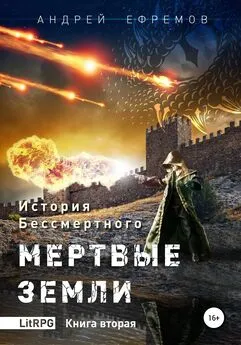Андрей Журавлёв - Сотворение Земли. Как живые организмы создали наш мир
- Название:Сотворение Земли. Как живые организмы создали наш мир
- Автор:
- Жанр:
- Издательство:Альпина нон-фикшн
- Год:2018
- Город:Москва
- ISBN:978-5-9614-5294-5
- Рейтинг:
- Избранное:Добавить в избранное
-
Отзывы:
-
Ваша оценка:
Андрей Журавлёв - Сотворение Земли. Как живые организмы создали наш мир краткое содержание
О том, как формировалась наша планета — такая, какой мы ее знаем, — книга Андрея Журавлева, палеонтолога, доктора биологических наук, профессора кафедры биологической эволюции биологического факультета МГУ.
Сотворение Земли. Как живые организмы создали наш мир - читать онлайн бесплатно ознакомительный отрывок
Интервал:
Закладка:
Eagle R. A. et al. 2011. Dinosaur body temperatures determined from isotopic ( 13C- 18O) ordering in fossil biominerals // Science , 333, 443–5.
Edwards E. J. et al. 2010. The origins of C 4grasslands: Integrating evolutionary and ecosystem science // Science , 328, 587–91.
Ellison A. M., Farnsworth E. J., Merkt R. E. 1999. Origins of mangrove ecosystems and the mangrove biodiversity anomaly // Global Ecology and Biogeography , 8, 95–115.
Erickson G. M. et al. 2015. Wear biomechanics in the slicing dentition of the giant horned dinosaur Triceratops // Science Advances , 1, e1500055. DOI: 10.1126/sciadv.1500055
Eriksson O. 2016. Evolution of angiosperm seed disperser mutualisms: the timing of origins and their consequences for coevolutionary interactions between angiosperms and frugivores // Biological Reviews , 91, 168–86.
Falkowski P. G. et al. 2004. The evolution of modern eukaryotic plankton // Science , 305, 354–60.
Fastovski D. E., Weishampel D. B. 2009. Dinosaurs: A Concise Natural History. Cambridge: Cambridge Univ. Press, 379 p.
Feild T. S. et al. 2004. Dark and disturbed: a new image of early angiosperm ecology // Paleobiology , 30, 82–107.
Frey E., Tischlinger H. 2012. The Late Jurassic pterosaur Rhamphorhynchus , a frequent victim of the ganoid fish Aspidorhynchus ? // PLoS ONE , 7 (3), e31945. DOI: 10.1371/journal.pone.0031945
Friis E. M., Pedersen K. R., Crane P. R. 2010. Diversity and obscurity: fossil flowers and the early history of angiosperms // Philosophical Transactions of the Royal Society of London B: Biological Sciences, 365, 369–82.
Gattuso J.-P., Allemand D., Frankignoulle M. 1999. Photosynthesis and calcification at cellular, organismal and community levels in coral reefs: A review of interactions and control by carbonate chemistry // American Zoologist , 39, 160–83.
Gingerich P. D., Haq M.-u., Zalmout I. S., Khan I. H., Malkani M. S. 2001. Origin of whales from early artiodactyls: Hands and feet of Eocene Protocetidae from Pakistan // Science , 293, 2239–42.
Gnanadesikan A., Anderson W. G. 2009. Ocean water clarity and the ocean general circulation in a coupled climate model // Journal of Physical Oceanography , 39, 314–32.
Goswami A. et al. 2011. A radiation of arboreal basal eutherian mammals beginning in the Late Cretaceous of India // Proceedings of the National Academy of Sciences of the USA, 108, 16333–8.
Guil-Guerrero J. L. et al. 2014. The fat from frozen mammals reveals sources of essential fatty acids suitable Palaeolithic and Neolithic humans // PLoS ONE , 9 (1), e84480. DOI: 10.1371/journal.pone.0084480
Guthrie R. D. 1990. Frozen Fauna of the Mammoth Steppe: The Story of Blue Babe. Chicago: Univ. Chicago Press, 323 p.
Hallock P. 1987. Fluctuations in the trophic resource continuum: A factor of global diversity cycles? // Paleoceanography, 2, 457–71.
Hards V. L. 2005. Volcanic contributions to the global carbon cycle // British Geological Survey Occasional Publication , 10, 1–26.
Heim N. A., Knope M. L., Schaal E. K., Wang S. C., Payne J. L. 2015. Cope’s rule in the evolution of marine animals // Science , 347, 867–70.
Hendry K. R. et al. 2018. Competition between silicifiers and non-silicifiers in the Past and Present ocean and its evolutionary impacts // Frontiers in Marine Science , 5, 22. DOI: 10.3389/fmars.2018.00022
Hill R. V., D’Emic M. D., Bever G. S., Norell M. A. 2015. A complex hyobranchial apparatus in a Cretaceous dinosaur and the antiquity of avian paraglossalia // Zoological Journal of the Linnean Society. DOI: 10.1111/zoj.12293
Huang S. et al. 2017. Mammal body size evolution in North America and Europe over 20 Myr: similar trends generated by different processes // Proceedings of the Royal Society of London B, 284. DOI: 10.1098/rspb.2016.2361
Hummel J. et al. 2008. In vitro digestibility of fern and gymnosperm foliage: implications for sauropod feeding ecology and diet selection // Proceedings of the Royal Society of London B, 275, 1015–21.
Huttenlocker A. K., Farmer C. G. 2017. Bone microvascular tracks red blood cell size diminution in Triassic mammal and dinosaur forerunners // Current Biology , 27, 48–54.
Jenkyns H. C. 2010. Geochemistry of oceanic anoxic events // Geochemistry, Geophysics, Geosystems , 11, Q03004. DOI: 10.1029/2009GC002788
Johnson C. N. 2009. Ecological consequences of Late Quaternary extinctions of megafauna // Proceedings of the Royal Society of London B, 276, 2509–19.
Johnson C. N. et al. 2016. What caused extinction of the Pleistocene megafauna of Sahul? // Proceedings of the Royal Society of London B, 283 (1824), 20152399. DOI: 10.1098/rspb.2015.2399
Kahlke R.-D. 2014. The origin of Eurasian Mammoth Faunas ( Mammuthus-Coelodonta Faunal Complex) // Quaternary Science Reviews , 96, 32–49.
Keller G. et al. 2013. Chicxulub impact spherules in the North Atlantic and Caribbean: age constraints and Cretaceous-Tertiary boundary hiatus // Geological Magazine , 150, 885–907.
Kidwell S. M., Brenchley P. J. 1994. Patterns in bioclastic accumulations through the Phanerozoic: Changes in input or destruction // Geology , 22, 1139–43.
Kirillova I. V., Shidlovskiy F. K. 2010. Estimation of individual age and season of death in woolly rhinoceros, Coelodonta antiquitatis (Blumenbach, 1799), from Sakha-Yakutia, Russia // Quaternary Science Reviews , 29, 3106–14.
Klompmaker A. A., Kowalewski M., Huntley J. W., Finnegan S. 2017. Increase in predator-prey size ratios throughout the Phanerozoic history of marine ecosystems // Science , 356, 1178–80.
Kosnik M. A. et al. 2011. Changes in shell durability of common marine taxa through the Phanerozoic: evidence for biological rather than taphonomic drivers // Paleobiology , 37, 303–31.
Kotrc B., Knoll A. H. 2015. Morphospaces and databases: Diatom diversification through time / Hamm C., ed. Evolution of Lightweight Structures: Analyses and Technical Applications. Dordrecht: Springer, p. 17–37.
Krassilov V. A., Rasnitsyn A. P., Afonin S. A. 2007. Pollen eaters and pollen morphology: co-evolution through the Permian and Mesozoic // African Invertebrates , 48, 3–11.
Kurzawski R. M. et al. 2016. Earthquake nucleation in weak subducted carbonates // Nature Geoscience, 9, 717–22.
Labandeira C. C., Currano E. D. 2013. The fossil record of plant-insect dynamics // Annual Review of Earth and Planetary Sciences , 41, 287–311.
Lehmann T., Schaal F. K. 2012. Messel and the Terrestrial Eocene — Proceedings of the 22nd Senckenberg Conference // Palaeobiodiversity and Palaeoenvironments , 92, 397–402.
Lindgren J., Caldwell M. W., Konishi T., Chiappe L. M. 2010. Convergent evolution in aquatic tetrapods: Insights from an exceptional fossil mosasaur // PLoS ONE , 5 (8), e11998. DOI: 10.1371/journal.pone.0011998
Lloyd G. M. et al. 2008. Dinosaurs and the Cretaceous terrestrial revolution // Proceedings of the Royal Society of London B, 275, 2483–90.
Luo Z.-X. 2007. Transformation and diversification in early mammal evolution // Nature , 450, 1011–9.
MacLaren J. A., Anderson P. S. L., Barrett P. M., Rayfield E. J. 2017. Herbivorous dinosaur disparity and its relationship to extrinsic evolutionary drivers // Paleobiology , 43, 15–33.
Madin J. S. et al. 2006. Statistical independence of escalatory ecological trends in Phanerozoic marine invertebrates // Science , 312, 897–900.
McAnena A. et al. 2013. Atlantic cooling associated with a marine biotic crisis during the mid-Cretaceous period // Nature Geoscience , 6, 558–61.
McGowan A. J., Smith A. B., eds. 2011. Comparing the Geological and Fossil Records: Implications for Biodiversity Studies. London: Geol. Soc., 310 p. ( Geological Society of London Special Publications , 358).
Misra S., Froelich P. N. 2012. Lithium isotope history of Cenozoic seawater: Changes in silicate weathering and reverse weathering // Science , 335, 818–23.
Mutterlose J., Bottini C. 2013. Early Cretaceous chalks from the North Sea giving evidence for global change // Nature Communications , 4, 1686. DOI: 10.1038/ncomms2698
Nespolo R. F. et al. 2011. Using new tools to solve an old problem: the evolution of endothermy in vertebrates // Trends in Ecology and Evolution , 26, 414–23.
Noè L. F., Taylor M. A., Gómez-Pérez M. 2017. An integrated approach to understanding the role of the long neck in plesiosaurs // Acta Palaeontologica Polonica , 62, 137–62.
Peris D. et al. 2017. False blister beetles and the expansion of gymnosperm-insect pollination modes before angiosperm dominance // Current Biology , 27, 1–8. DOI: 10.1016/j.cub.2017.02.009
Prevosti F. J., Vizcaíno S. F. 2006. Paleoecology of the large carnivore guild from the late Pleistocene of Argentina // Acta Palaeontologica Polonica , 51, 407–22.
Quirk J. et al. 2012. Evolution of trees and mycorrhizal fungi intensifies silicate weathering // Biology Letters , 8, 1006–11.
Rasnitsyn A. P., Quicke D. L. J., eds. 2002. History of Insects. Dordrecht: Kluwer Academic Publishers, 517 p.
Ratti S., Knoll A. H., Giordano M. 2013. Grazers and phytoplankton growth in the ocean: an experimental and evolutionary perspective // PLoS ONE , 8 (10), e77349. DOI: 10.1371/journal.pone.0077349
Rey K. et al. 2017. Oxygen isotopes suggest elevated thermometabolism within multiple Permo-Triassic therapsid clades // eLife Sciences, 6, e28589. DOI: 10.7554/eLife.28589
Sander P. M. 2013. An evolutionary cascade model for sauropod dinosaur gigantism — Overview, update and tests // PLoS ONE , 8 (10), e78573. DOI: 10.1371/journal.pone.0078573
Schaal E. K., Clapham M. E., Rego B. L., Wang S. C., Payne J. L. 2016. Comparative size evolution of marine clades from the Late Permian through Middle Triassic // Paleobiology, 42, 127–42.
Sellés A. G., Vila B., Galobart À. 2017. Evidence of reproductive stress in titanosaurian sauropods triggered by an increase in ecological competition // Scientific Reports , 7, 13827. DOI: 10.1038/s41598-017-14255-6
Semprebon G. M. et al. 2016. Dietary reconstruction of pygmy mammoths from Santa Rosa Island of California // Quaternary International, 406, 123–36.
Shcherbakov D. E. 2008. On Permian and Triassic insect faunas in relation to biogeography and the Permian-Triassic crisis // Paleontological Journal , 42 (1), 15–32.
Shattuck M. R., Williams S. A. 2016. Arboreality has allowed for the evolution of increased longevity of mammals // Proceedings of the National Academy of Sciences of the USA, 107, 4635–9.
Smith F. A., Elliott S. M., Lyons S. K. 2010. Methane emissions from extinct megafauna // Nature Geoscience, 3, 374–5.
Читать дальшеИнтервал:
Закладка:
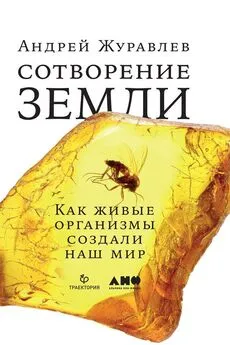

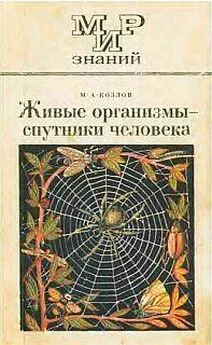
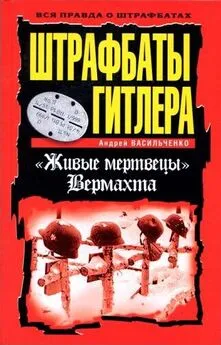
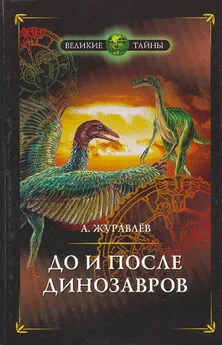
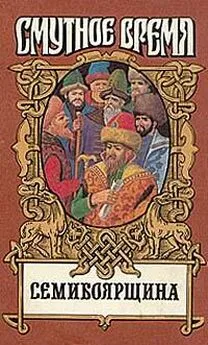
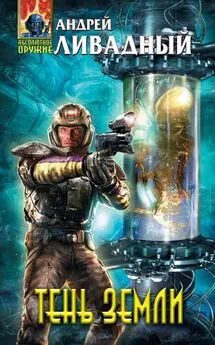
![Андрей Максимов - Самоубийство Земли [Повести и рассказы]](/books/1059571/andrej-maksimov-samoubijstvo-zemli-povesti-i-rass.webp)
